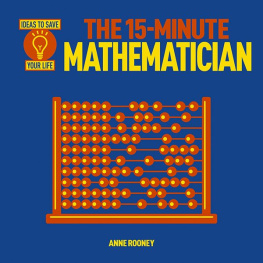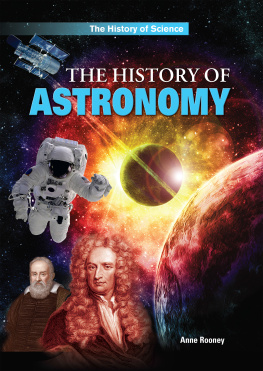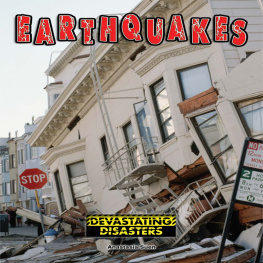Anne Rooney - Earthquake!
Here you can read online Anne Rooney - Earthquake! full text of the book (entire story) in english for free. Download pdf and epub, get meaning, cover and reviews about this ebook. year: 2006, publisher: Encyclopaedia Britannica;Britannica Digital Learning, genre: Children. Description of the work, (preface) as well as reviews are available. Best literature library LitArk.com created for fans of good reading and offers a wide selection of genres:
Romance novel
Science fiction
Adventure
Detective
Science
History
Home and family
Prose
Art
Politics
Computer
Non-fiction
Religion
Business
Children
Humor
Choose a favorite category and find really read worthwhile books. Enjoy immersion in the world of imagination, feel the emotions of the characters or learn something new for yourself, make an fascinating discovery.

- Book:Earthquake!
- Author:
- Publisher:Encyclopaedia Britannica;Britannica Digital Learning
- Genre:
- Year:2006
- Rating:5 / 5
- Favourites:Add to favourites
- Your mark:
- 100
- 1
- 2
- 3
- 4
- 5
Earthquake!: summary, description and annotation
We offer to read an annotation, description, summary or preface (depends on what the author of the book "Earthquake!" wrote himself). If you haven't found the necessary information about the book — write in the comments, we will try to find it.
Earthquake! describes how and where earthquakes happen.
Earthquake! — read online for free the complete book (whole text) full work
Below is the text of the book, divided by pages. System saving the place of the last page read, allows you to conveniently read the book "Earthquake!" online for free, without having to search again every time where you left off. Put a bookmark, and you can go to the page where you finished reading at any time.
Font size:
Interval:
Bookmark:

E-book published in 2012 by Encyclopdia Britannica, Inc., in association with Arcturus Publishing Limited, 26/27 Bickels Yard, 151-153 Bermondsey Street, London SE1 3HA. Britannica, Encyclopdia Britannica, and the Thistle logo are registered trademarks of Encyclopdia Britannica, Inc.
ISBN-13: 978-1-61535-648-5 (e-book)
This edition first published by Arcturus Publishing
Distributed by Black Rabbit Books
123 South Broad Street
Mankato
Minnesota MN 56001
Copyright 2006 Arcturus Publishing
All rights reserved
Library of Congress Cataloging-in-Publication Data
Rooney, Anne
Earthquake! / by Anne Rooney.
p. cm. -- (Natures fury)
Includes index
1. EarthquakesJuvenile literature. 2. Natural disastersJuvenile
literature. I. Title
QE521.3.R66 2007
363.3495--dc22
2006022603
9 8 7 6 5 4 3 2
Editor: Alex Woolf
Design: Minds Eye Design
Picture Research: Shelley Noronha
Picture credits:
Corbis: 4 (Bettmann), 15 (Vanni Archive), 17 (Eriko Sugita/Reuters), 18 (Roger Ressmeyer),
19 (Lloyd Cluff), 20 (Patrick Robert/Sygma), 22 (Reuters), 27 (Peter Turnley), 29 (Mimmo Jodice).
Rex Features: cover and 5 (Sipa Press), 9 (Araldo di Crollalanza), 11 (Roy Garner), 13
(Sipa Press), 14 (DigitalGlobe), 21 (Roger-Viollet), 23 (Sipa Press), 24 (Action Press), 26
(Dan Tuffs), 28 (Denis Cameron).
Science Photo Library: 6 (Gary Hincks), 7 (Roger Harris), 8 (Christian Darkin), 10 (Gary Hincks), 12 (Gary Hincks), 16 (Mauro Fermariello), 25 (Peter Menzel).
I n an earthquake, the ground moves or shakes, sometimes very violently. It can bring buildings crashing to the ground and twist or break up roads, railway lines, and bridges. For people who experience an earthquake, it can be a terrifying, dangerous event. A major quake that hits a densely populated area can kill hundreds of thousands of people.
Rippling ground
Shock waves from an earthquake can travel a long way, spreading through the ground just like ripples spread through water. This means that even people living a long way from where the earthquake starts can be affected. Each year the earth experiences more than 50,000 earthquakes, although most of these are so small they are completely unnoticed by most people and are only detected by scientists using sensitive measuring instruments.
Earthquakes in history
Earthquakes have happened ever since the earth formed a solid surface 3.8 billion years ago. We have historical records of earthquakes throughout human history and geological evidence from earlier times. People long ago did not know what caused earthquakes and often made up legends about them or believed their gods were responsible for the terrifying events.

A massive earthquake rocked Tokyo in 1650.
Danger area
Earthquakes are most dangerous for people when they strike built-up areas. Falling buildings and roads breaking up cause many injuries and deaths. Although there is less danger from an earthquake itself if it happens in open countryside, it can trigger other hazards such as landslides, floods, avalanches, and giant waves called tsunamis. These can strike an area already devastated by an earthquake, making rescue operations difficult and killing survivors of the original quake.

Around 10,000 people may have died when Mexico City was struck by an earthquake in 1985.
 THE LEGEND OF NAMAZU
THE LEGEND OF NAMAZU
Japan is an area often troubled by earthquakes, and people living there have kept records of them for many centuries. Long ago, Japanese people accounted for earthquakes with the story of Namazu, a giant catfish. According to the legend, Namazu lives in the mud under the islands of Japan. Most of the time the fish is kept still by the god Kashima pressing down on him with the weight of a huge stone. But when Kashima fails to hold him down, Namazu thrashes around and Japan is shaken wildly.
I f the surface of the earth were a single piece, like the skin of an orange, we probably wouldnt have any earthquakes. But it is actually many pieces fitted together like a jigsaw puzzlemore like the skin of an orange that has been peeled off and then pieced back together.
Tectonic plates
The hard, rocky surface of the earth is only the very top layer. It is called the crust. Beneath it is slowly moving, semi-molten hot rock, thousands of miles deep. The crust is divided into lots of chunks that fit together to cover the whole surface of the earth. The chunks are called tectonic plates. There are seven large plates and many smaller ones.
Faults
The lines where tectonic plates meet are called faults. It is along the faults that most earthquakes happen. Most volcanoes are found near faults too.

The red dots on this map are often the sites of major earthquakes. Most of these occur at the edges of tectonic plates, shown here in gray.
Earth and sea
Six of the large tectonic plates carry land or a mix of land and sea, but much of the Pacific Ocean is on a single, vast plate of its own. The crust that holds land is thicker and older than the crust that carries ocean. Land-bearing crust is also lighter, so it floats higher on the semi-molten rock underneath. The thinner but denser rock of the ocean-bearing crust sinks farther into the semi-liquid rock. Because these areas are lower, water runs into them from the higher ground, forming the oceans.

Beneath the thin surface of the earth are thousands of miles of scalding rock and metal.
 LAYERS OF THE EARTH
LAYERS OF THE EARTH
The crust makes up less than 1 percent of the earths thickness. Beneath the crust is a layer of very hot rock called the mantle. The upper mantle is about 1,500 degrees Farenheit (800 degrees Celsius) and is almost solid. Below this is the lower mantle, which is hotterup to 5,400 degrees Farenheit (3,000 degrees Celsius)and more fluid. Beneath the lower mantle is the outer core, a thick layer of liquid metal. At the center of the earth is the inner core, a ball of metal hotter than the surface of the sun. Despite its heat, the inner core is kept solid by the immense pressure of the earth pressing down on it. The top part of the upper mantle and the crust together are called the lithosphere, the part that makes up the tectonic plates.
T he tectonic plates are slowly moving all the time, carried on a layer of thick, hot rock that gradually creeps around the earth. They move at about two to four inches (5 to 10 centimeters) per year, some traveling more quickly than others.
Next pageFont size:
Interval:
Bookmark:
Similar books «Earthquake!»
Look at similar books to Earthquake!. We have selected literature similar in name and meaning in the hope of providing readers with more options to find new, interesting, not yet read works.
Discussion, reviews of the book Earthquake! and just readers' own opinions. Leave your comments, write what you think about the work, its meaning or the main characters. Specify what exactly you liked and what you didn't like, and why you think so.










